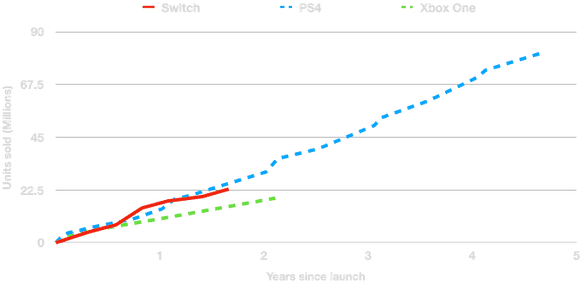Griffin McElroy, Polygon:
With that sage wisdom in mind, it’s time for us — Griffin and Justin, who have, for the purposes of this introduction, fused into a singular, fraternal hivemind — to announce some big and bittersweet news: This Friday will be our last day as full-time employees at Polygon.
We’ve written our own individual letters below, but understand that everyone’s attention span might not sustain them through both; especially now that you know we’re leaving, and our relevance to you slips away like so many grains of sand through the hourglass. So, here’s a TL;DR, as the kids say: We’re leaving to focus on our other projects, and to have more time to live functional human lives. We’re gonna keep doing Monster Factory on some kind of recurring basis, as well as a couple other of our pre-existing Polygon projects. Our departure is completely amicable — so, SORRY, beef-hunters. No beef to be found here. This exit is strictly vegetarian.
Now that we’ve spoiled all the big surprises, here’s our individual takes. Thank you all so much.
This one hurts.
When my wife and I moved to San Francisco for my job, I felt alone when outside of her company. On my commute or wandering the city, I’d listen to Polygon’s The Besties with Griffin and Justin McElroy, Russ Frushtick, and Chris Plante. Their humor and camaraderie comforted me. On one episode, I caught wind that Griffin and Justin had another podcast: My Brother, My Brother, and Me. It was a treasure trove of wit and goofs; things that helped me through my days.
Even with their plethora of amazing and innovative endeavors outside of games journalism, I will always associate Griffin and Justin with Polygon. They’re perspectives and writing are exceptional. I always looked forward to their articles.
But the writing was on the wall. Their bylines on Polygon.com appeared with decreasing frequency, while their amount of “side-projects” began to seemingly multiply.
In their departure letters, they both reflect on Polygon’s editor-in-chief Chris Grant’s friendship — how he helped kick off their games journalism journey. It’s amazing to see how much adoration is paid to Grant for his support and willingness to allow them to balance their dream job while pursuing other endeavors.
The piece of this news that hits the hardest comes from Justin’s letter. It speaks to the heart and humanity I believe the folks behind Polygon harbor. It also speaks to why I write Zero Counts and the countless other blogs I left in its wake:
So for years, I wrote for myself. I created and maintained no fewer than three different blogs with a readership of, statistically speaking, nobody. I pitched myself to every major gaming site and magazine and was ignored by all of them. But I kept applying, kept pitching, and was eventually ignored by almost all of them. After a few years, I was able to cobble something that looked like a resume in dim light, and things got a bit easier.
The call that changed my life though came from Chris Grant, the EIC of Joystiq who remembered liking my submissions when I had applied for a job (six months prior, didn’t get it, natch). He was reminded of my existence after I emailed him trying to get Joystiq to post about some videos I had made about a laserdisc lightgun game featuring prop comedian Gallagher. I owe Gallagher so much that I’ll never be able to repay.
I’m happy for Griffin and Justin and look forward to supporting their other adventures. But this one hurts.
Godspeed, boys.

